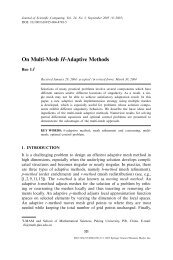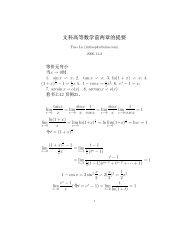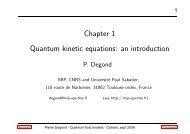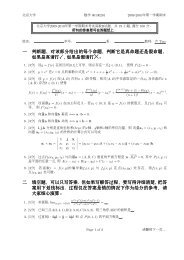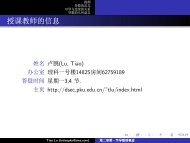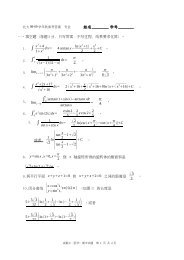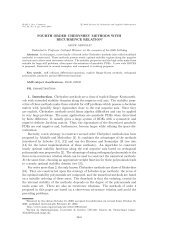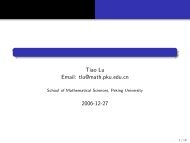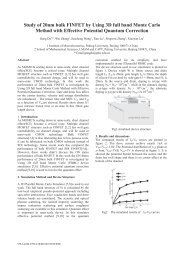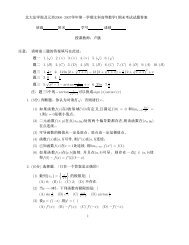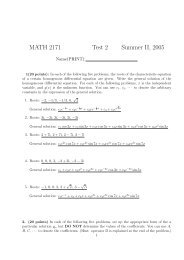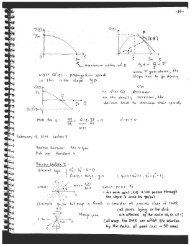Abstract
Abstract
Abstract
You also want an ePaper? Increase the reach of your titles
YUMPU automatically turns print PDFs into web optimized ePapers that Google loves.
CHAPTER 1. OVERVIEW 11<br />
in many different states at once. While one could write a wavefunction that would<br />
describe the state of the ensemble of electrons, the wavefunction would be written<br />
as ψ(¯x1, ¯x2,...,¯xn), where ¯xi would be the spatial coordinate of the ith electron.<br />
This becomes quite computationally burdensome when dealing with more than a few<br />
electrons. Therefore, other formalisms of quantum mechanics would be better suited<br />
to handle the description of an ensemble of electrons. One such formalism is the<br />
density matrix formalism [5], [12]. The Wigner function is derived from the density<br />
matrix, so we shall first explain the density matrix.<br />
Let {ψi(q)} be a collection of the possible states which the electrons can exists and<br />
{¯ji} be the corresponding probabilites that an electron is found in these states. The<br />
density matrix stores all this information into one compact form. The density matrix<br />
is a function of two position variables and is given by ρ(q, r) = <br />
i ¯jiψi(q)ψ ∗ i (r). The<br />
time evolution of the density matrix can be derived from Schrödinger’s equation as<br />
follows:<br />
∂ρ(q, r)<br />
∂t<br />
∂ <br />
=<br />
∂t<br />
i<br />
= ∂<br />
¯ji<br />
i<br />
¯jiψi(q)ψ ∗ i (r)<br />
∂t [ψi(q)ψ ∗ i (r)]<br />
= <br />
¯ji[ ∂ψi(q)<br />
Schrödinger’s equation tells us that ∂ψ(q)<br />
∂t<br />
i<br />
∂t ψ∗ i (r)+ψi(q) ∂ψ∗ i (r)<br />
∂t<br />
1<br />
=<br />
i [−2<br />
2m∗ ∂2ψ(q) ∂q2 +U(q)ψ(q)] and ∂ψ∗ (r)<br />
∂t =<br />
− 1<br />
i [−2<br />
2m∗ ∂2ψ ∗ (r)<br />
∂r2 + U(r)ψ∗ (r)]. Substituting these into the above equation and rear-<br />
]




